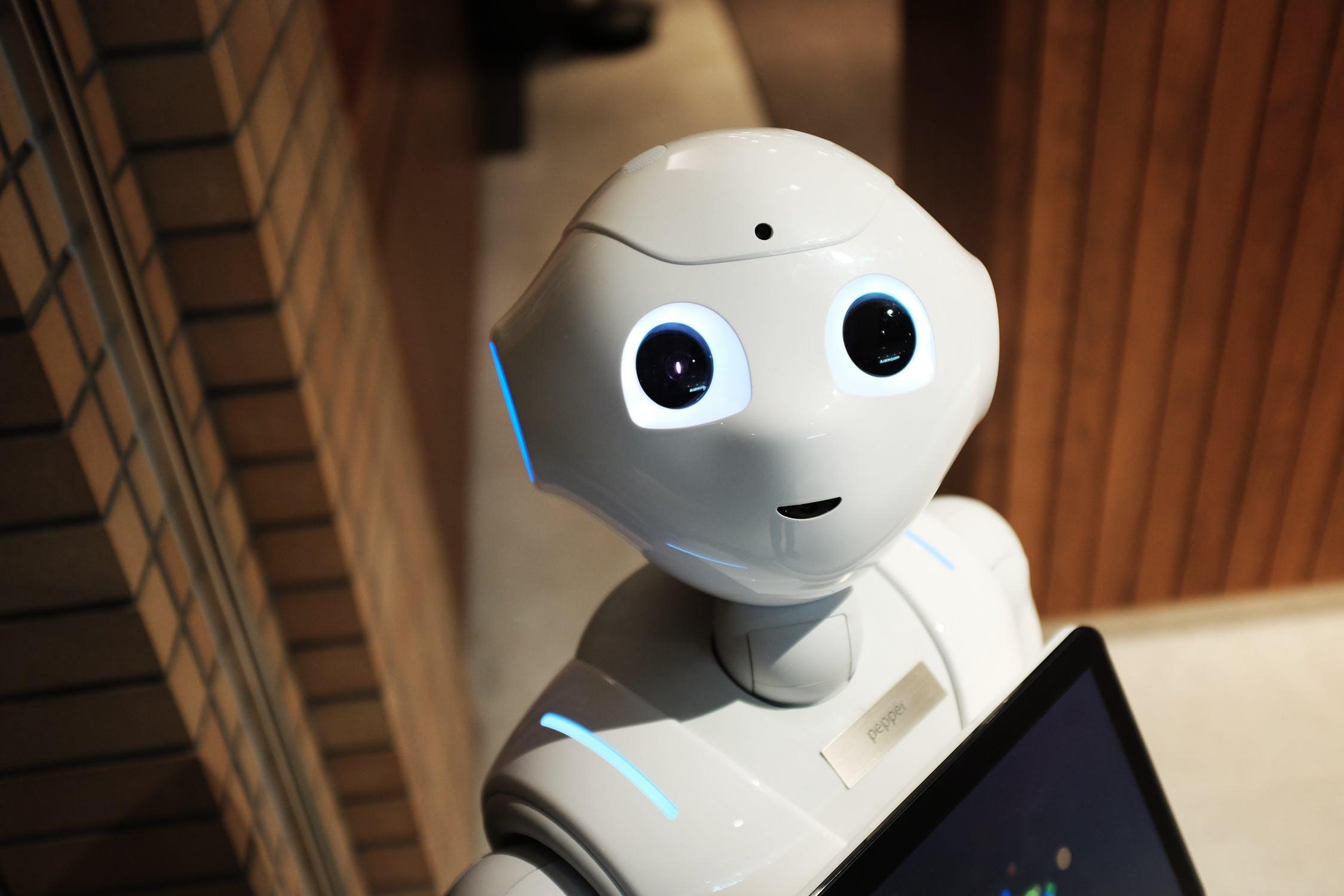Comments (3)
Chloe Gibbs
Organisations are providing us everything we need to succeed. It's up for workers to do their job.
Jack Heath
Strong combination !!
Aaron Max
Excellent article

Business leaders are using artificial intelligence (AI) and internet of things (IoT) to improve the productivity, performance, and security of employees in the workplace.
Modern technologies such as artificial intelligence, big data, blockchain, and IoT have displayed untold potential in multiple industry sectors such as retail, manufacturing, healthcare, telecommunications, and many more. Businesses in these industry sectors are following the trend of digital transformation in the workplace. For this purpose, several organizations are introducing advanced technologies such as IoT and AI in the workplace. The aggressive adoption of such technologies has helped AI and IoT market grow substantially. The global AI in embedded IoT devices market will be worth $26.28 billion by 2023. Also, the applications developed using AI and IoT will help streamline various business procedures. The introduction of IoT and AI in the workplace will augment human abilities and enhance the efficiency of several business workflows. Advanced applications based on such technologies can make any workplace smarter and improve employee experience. Hence, business leaders must be informed about the benefits of adopting IoT and AI in the workplace.

Workplaces have several tasks that are routine and mundane such as scheduling meetings. Usually, employees may send emails back-and-forth to several other employees and enquire about an open slot on their calendar. This process can be increasingly tedious and time-consuming for employees.
Business leaders can adopt AI in the workplace to enhance employee productivity. Organizations can deploy AI-powered personal assistants for scheduling, cancelling, and rescheduling meetings. AI-enabled assistants can analyze an employee’s schedule and suggest time slots to other employees based on their availability. When a time slot gets decided, an AI assistant will notify all participants of the meeting. Also, AI can be used to automatically transcribe meetings and create a text file. Furthermore, the introduction of AI in the workplace can also automate other tasks such as sorting and categorizing emails.
HR executives usually resolve employee queries related to various workplace policies. Also, HR executives have other core tasks such as managing payroll, recruiting talent, and onboarding new employees. Similarly, IT professionals can be caught up employee queries along with their core tasks. Hence, the productivity of HR and IT department can be severely affected.
The deployment of AI in the workplace can enable organizations to resolve employee queries without interrupting their HR or IT departments. Several organizations are deploying AI-powered chatbots in the workplace. Similarly, every organization can deploy AI-enabled chatbots that can answer different employee queries accurately. Employees can ask queries using emails, text messages, and online messengers and AI will respond accordingly. If the chatbot is unable to answer a query, then it will assign a request to the concerned personnel who can resolve the query. With this approach, AI-enabled chatbots can also learn how to respond to various queries. Additionally, the deployment of AI in the workplace will allow employees to communicate in various language as AI can translate their queries to English.
The adoption of AI in the workplace can streamline the onboarding process. AI systems can automate various tasks such as generating offer letters, sending documents, and walking new employees through various company-wide policies. Additionally, AI can coach new employees by observing and analyzing how they conduct various tasks. Then, AI tools can suggest ways to improve their efficiency. For instance, AI systems can analyze sales calls of multiple employees and offer tips to improve their performance. For this purpose, AI systems can record sales calls and generate statistics for each employee. Using this approach, AI systems can offer suggestions based on every employee’s data. Likewise, AI can also train customer service executives to help them deliver better services. With this approach, AI can provide personalized training for each employee.
In the digital age, running a competitive business without data is almost impossible. Businesses collect different types of data such as social media data, customer data, and operational data for various applications. However, the obtained cannot be useful if it is not used for generating analytics. Hence, deployment of AI in the workplace can enable business leaders to generate valuable insights from the acquired data. For this purpose, AI systems will optimize data collected from various sources such as social media and personal information of customers and store it in a centralized location. Then, AI systems will analyze the collected data to offer profound insights that can help business leaders predict industry trends, identify anomalies, and generate detailed reports.

The introduction of IoT in the workplace can benefit organizations in the following manner:
Every employee prefers a different temperature on the thermostat and this disagreement can be a topic of conflict in the workplace. Business leaders can install smart thermostats and temperature sensors in the workplace to automate thermostat settings. Smart thermostats learn from employee temperature preferences and set the temperature accordingly. Similarly, business leaders can install several IoT-powered appliances such as smart lights, smart air conditioners, and coffee machines that can be operated using a smartphone.
Organizations can install IoT sensors in the workplace to notify employees about empty conference rooms. These sensors will monitor all conference rooms and display their status as ‘available’ or ‘busy’ in a centralized location. With this approach, employees can effortlessly find empty conference rooms.
Business leaders can introduce effective security measures and access control in the workplace with the help of IoT. Conventional keys, badges, and passes can be easily forgotten or duplicated. Hence, organizations can deploy smart locks that can be effortlessly unlocked using a smartphone. Such locks can also enable access control for certain rooms. For instance, only a few employees will have access to rooms that contain crucial paperwork and confidential data. With the help of IoT, business leaders can offer a granular approach to access control in the workplace. Also, smart locks can integrate with existing security systems in an organization.
The US consumes around 23% of the world’s energy. Such statistics can be worrying after knowing about depleting energy reserves, overpopulation, and climate change. Energy in the form of electricity is extensively utilized in the workplace for several business procedures. Also, the cause of excessive energy consumption may be the inability to track energy utilization in the workplace. Hence, business leaders can deploy IoT sensors that can monitor energy usage. IoT sensors can monitor energy consumption in real-time and present the data to concerned parties. Concerned personnel can analyze the acquired data and take necessary steps to reduce energy consumption. Also, IoT sensors and smart appliances can help in controlling energy usage. For instance, smart lights have IoT sensors that can detect people in a room. In case a room is empty, lights would shut off and turn back on when someone enters the room. With this approach, organizations can monitor and control energy consumption and conserve energy.
The introduction of IoT and AI in the workplace will help businesses deliver more efficient operations and workflow, leading to a better ROI. Also, IoT and AI can significantly improve employee experience, which can help organizations in attracting and retaining the best talent. Additionally, AI and IoT can work together to make the existing applications more advanced. Hence, business leaders must invest in these modern technologies to reap their benefits and gain a competitive edge.
Organisations are providing us everything we need to succeed. It's up for workers to do their job.
Strong combination !!
Excellent article
Naveen is the Founder and CEO of Allerin, a software solutions provider that delivers innovative and agile solutions that enable to automate, inspire and impress. He is a seasoned professional with more than 20 years of experience, with extensive experience in customizing open source products for cost optimizations of large scale IT deployment. He is currently working on Internet of Things solutions with Big Data Analytics. Naveen completed his programming qualifications in various Indian institutes.
Leave your comments
Post comment as a guest